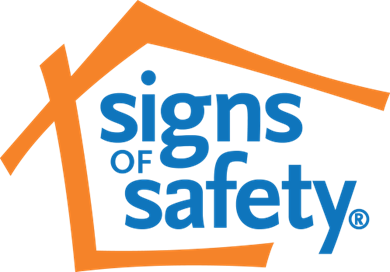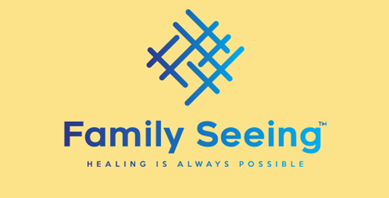

CYSCP

Building Brighter Futures Practice Model
Every conversation and decision in York;
- Starts with the child
- Considers what the long term impact my be of every decision
- Ensures we develop lifelong foundations for children through secure local family networks
- Asks "is it good enough for my child or family?"
Practice Framework
Systemic Practice
We will build trusting relationships with children and their families, focusing on the whole family system rather than an individual. Everyone is unique in their experiences and an expert in their own situation. We will work to understand a person in their context, their relationship and how they navigate within their own community. We will challenge ourselves to understand what makes someone who they are and how we can best support them.
Signs of Safety
We will work to build relationships with children, their families and everyone naturally connected to them to understand well-being, risk and promote safety, by building on strengths and successes and give the family and their network every opportunity to come up with and use their ideas to create lasting safety and well-being before we offer or impose ours. We will keep children and young people at the centre of our work through understanding their views, wishes and feelings. We will use a common language which is understood by all focusing on "What are we worried about?", "What's working well?", "What needs to happen?" to create long lasting change over a childs lifetime.
Family Seeing
We believe that every child has a family and a community who they should be connected to. We will invest in them, knowing that families and communities often have the best solutions to their challenges. Relationships are the foundations of resilience. We will see the family in front of us, engage in them and their networks at the earliest opportunity, identify those important adults in the childs life and work to build lifelong family relationships.
Safe and Together
We will work to promote the well-being of children through understanding the impact of domestic abuse, partnering with survivors to support them alongside intervening and engaging with those who cause harm to reduce risk.
Our Vision

Our vision for children and young people in York is:
- Come Home - More children returning to their family or network where it is safe to do so or at the very least returning to York when this is in line with their wishes, and;
- Stay Home - More children remaining at home or in their naturally connected network and their community.
- Safe and Connected - Children are safe and are connected to their network, community and supported to learn.
As part of the implementation of the Building Brighter Futures Practice Model, Children’s Social Care (CSC) we will support partners understand the practice model and develop a shared understanding of the vision and values and shared language and understanding of the model as we work together to support children in York.
Approaches such as Signs of Safety and Family Seeing are integral to the implementation of this new practice model.
These are also being supported by the City of York Safeguarding Children Partnership (CYSCP) as the basis of how we work with children across all partner agencies engaged in providing services for children, young people and their families in York.
Colleagues are invited to ‘Building Brighter Futures Practice Model Partner Briefing Sessions’ held via teams which are free for partners to attend and will provide further details of the Practice Model. These will be published in the partnership newsletter when sessions are arranged and can be booked on via MYLO.
Signs of Safety

Signs of Safety was created in Western Australia during the 1990s by Andrew Turnell and Steve Edwards. It is based on the use of Strength Based interview techniques and draws upon techniques from Solution Focused Brief therapy (SFBT).
The Signs of Safety approach is a relationship-grounded, safety-organised approach to child protection practice.
Here is a short YouTube clip by Andrew Turnell which outlines what signs of safety is.
Signs of Safety Framework
Central to the Signs of Safety and Family Networking approach is the use of specific practice tools and processes. These support family networks and professionals to work with each other in partnership to address concerns and find solutions to meet the needs of children.
The Signs of Safety assessment and planning framework is used for “mapping” the worries, strengths and steps to safety, all expressed in plain language. The map encompasses the 4 domains for enquiry:
The “three columns”:
- What we are worried about (past harm, future danger, complicating factors)
- What is working well (existing strengths and existing safety)
- What needs to happen (family and child protection authority safety goals and next steps for future safety)
And the scaling question to make judgments about how safe the child is, from the perspective of the child protection authorities, the family, their network and other professionals, to bring the case to judgment, develop understanding between the parties and to drive change.
Within these domains of enquiry are the risk assessment analysis categories that involve defining the harm, defining the danger, identifying existing safety and developing safety goals to address the danger, all expressed in succinct plain language. The Signs of Safety map, setting out the four domains of enquiry and the seven analysis categories is:
What are we worried about?
Past Harm: What have the adults done that has hurt or scared the child or children? or What has or is the child doing that has hurt or scared them or people around them. Be behaviourally specific: Who did what to whom?
Danger: What are you worried will happen to the child if nothing in this family or situation changes? Be specific, don't use broad terms, don't use jargon. Use the words of the child or family if you can.
Complicating Factors: What are the things that make this more tricky? You may not have anything in here; don't fill it in for the sake of it.
What's working well?
Existing Strengths: What are the good things, people, plans in and around the family? Amplify a lot. "They love the kids" is not enough, Make this meaningful and connected to the danger.
Existing Safety: What things, people, plans do we know have kept the children safe (from the danger) in the past? Get detail, Use exception questions. Make sure the child is in the questions you ask.
This is the starting point for safety planning. Hang out here a lot!
What needs to happen?
Safety Goals: What do we need to see to know if the child is safe enough and we can close the case? This is the 'what', not the 'how'. This is not a list of services. This (wherever it can be) uses 'presence of', not 'absence of'.
Next steps: Signs of Safety next steps;
- complete the Harm Analysis Matric
- complete My Three Houses
- finalise Danger Statements, Safety Goal and Scaling Question set
- create questions for existing Strengths and existing Safety Map with the family
- talk to the family about bringing a network
Safety scaling will be used at multi-agency meetings and throughout the assessment process; it is a tool to gather a judgement from everyone involved in the case, so that everyone has the opportunity to rate how safe they think the child is on a scale of 0 to 10. For example, on a scale of 0 – 10 where 10 is ‘Even though there are still tricky times everyone is confident there is a plan in place with people to help, so the kids will always be safe’ and 0 is ‘Things are so scary that it seems just a matter of time before the children are hurt and need to live somewhere with someone else’ where would you rate on the scale?
What this means for agencies
Although this assessment framework will predominately be used by Children’s Social Care, agencies should familiarise themselves with language used and the assessment framework such as the three columns (What are we worried about?, What is working Well? And What needs to happen?).
Depending on meetings agencies may also hear examples of Danger Statements, Safety Goals and Scaling Questions. Partners will also be asked to contribute and input particularly regarding scaling questions.
There is a glossary of terms which should support your understanding of some of the language you may hear whilst working in the City of York.
A summary of terminology is also provided in the ‘Practice and Learning Methods’ document. This document may not be accessible for users of assistive technology; request an accessible format. Alternatively, you can view a physical copy of this document. Email: [email protected] to find out more.
What won’t change
Signs of Safety will not replace how agencies/professionals work and here are some examples below of what won’t change when working with families:
- sharing information between agencies
- contributing to multi-agency plans and assessments.
- attendance and contribution in meetings
- your expertise and knowledge of working with children, young people and families
Training and Development
City of York Children’s Social Care with support from the Children’s Social Care Learning Development and Implementation Team will be holding a series of briefings for partners throughout 2024. These will be advertised via the City of York's Safeguarding Children Partnership and partners will be able to book on sessions via MYLO.
Family Seeing

Family seeing was created by Kevin Campbell in the USA whose background is in Child Protection, Children's Mental Health, and Health Care.
It is a practice approach to engaging networks of family members and other important adults to promote the safety, healthy development and healing of children and young people. It is an approach designed to decrease dependence on formal service systems and promotes family decision making processes such as family network meetings/family group conferences.
Here is a short YouTube clip by Kevin Campbell which outlines what Family Seeing is.
How Family Seeing links in with Signs of Safety
The Family Network Approach is an integral component to Signs of Safety practice. We know that young people grow more resilient and are more likely to achieve better outcomes when they have the support of a naturally connected network, yet this is one of the most underdeveloped areas in safeguarding. We also know that plans are likely to be more successful when they are led and owned by the family and their wider network, rather than being imposed on them by workers
Learning Development and Implementation Team (LDIT)
Children’s Services have established a LDIT to support them with the implementation of this practice model. For more information, email: [email protected] if you would like further information or to get involved.